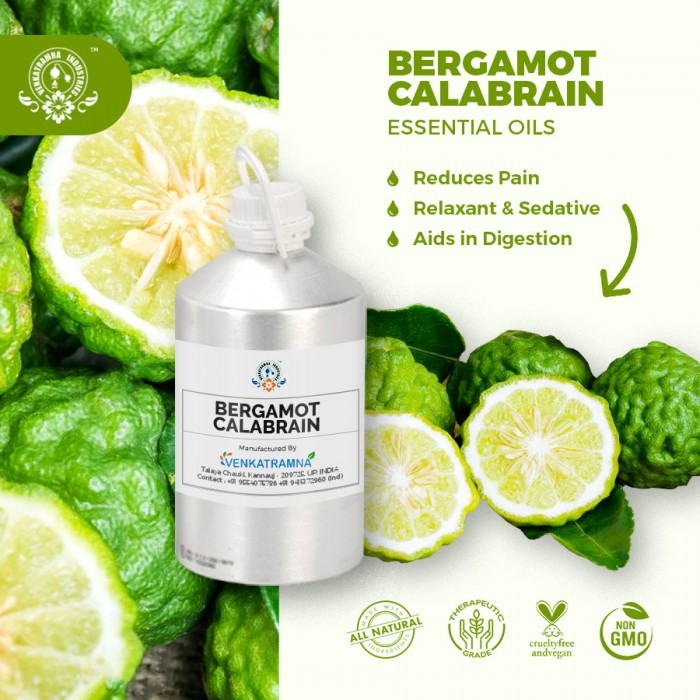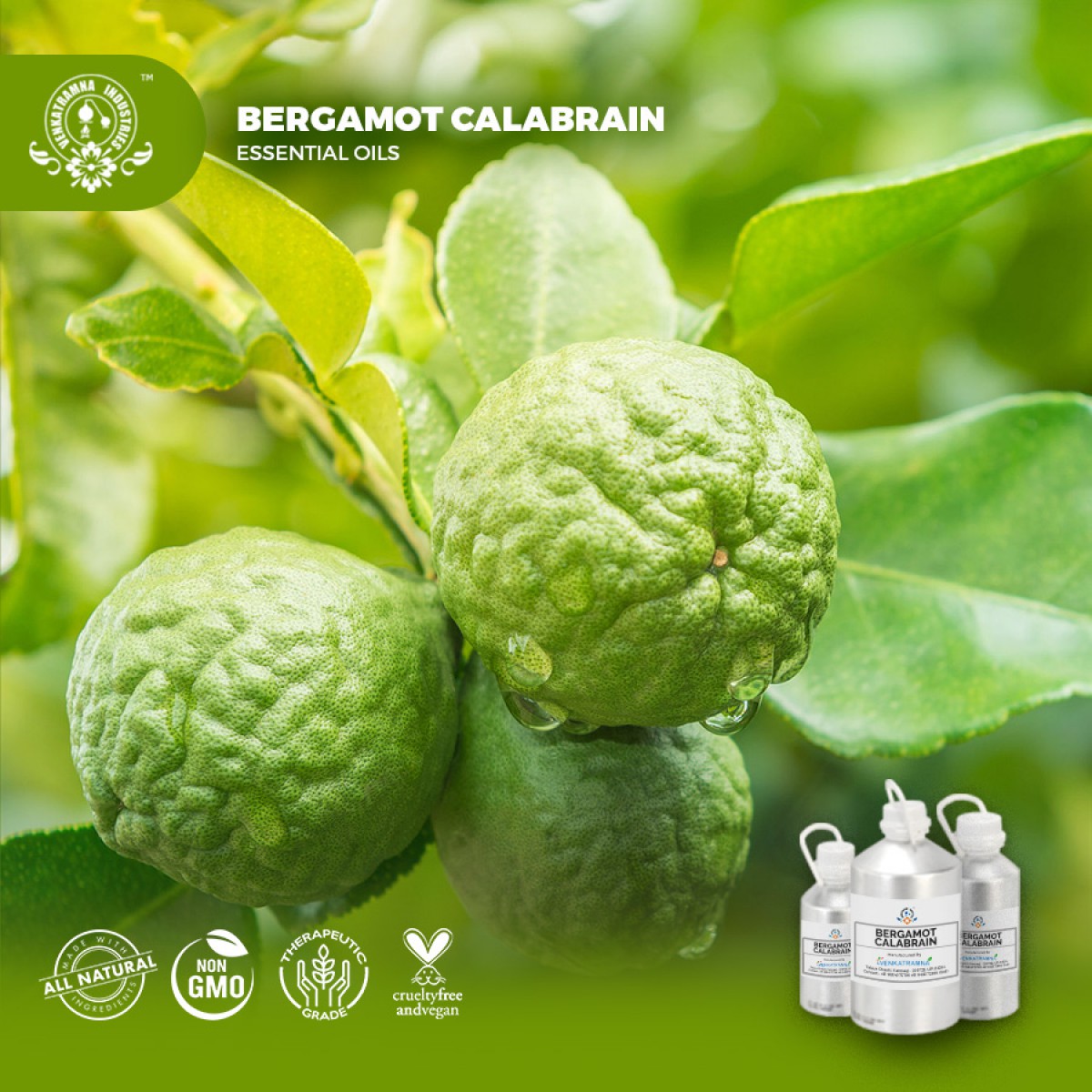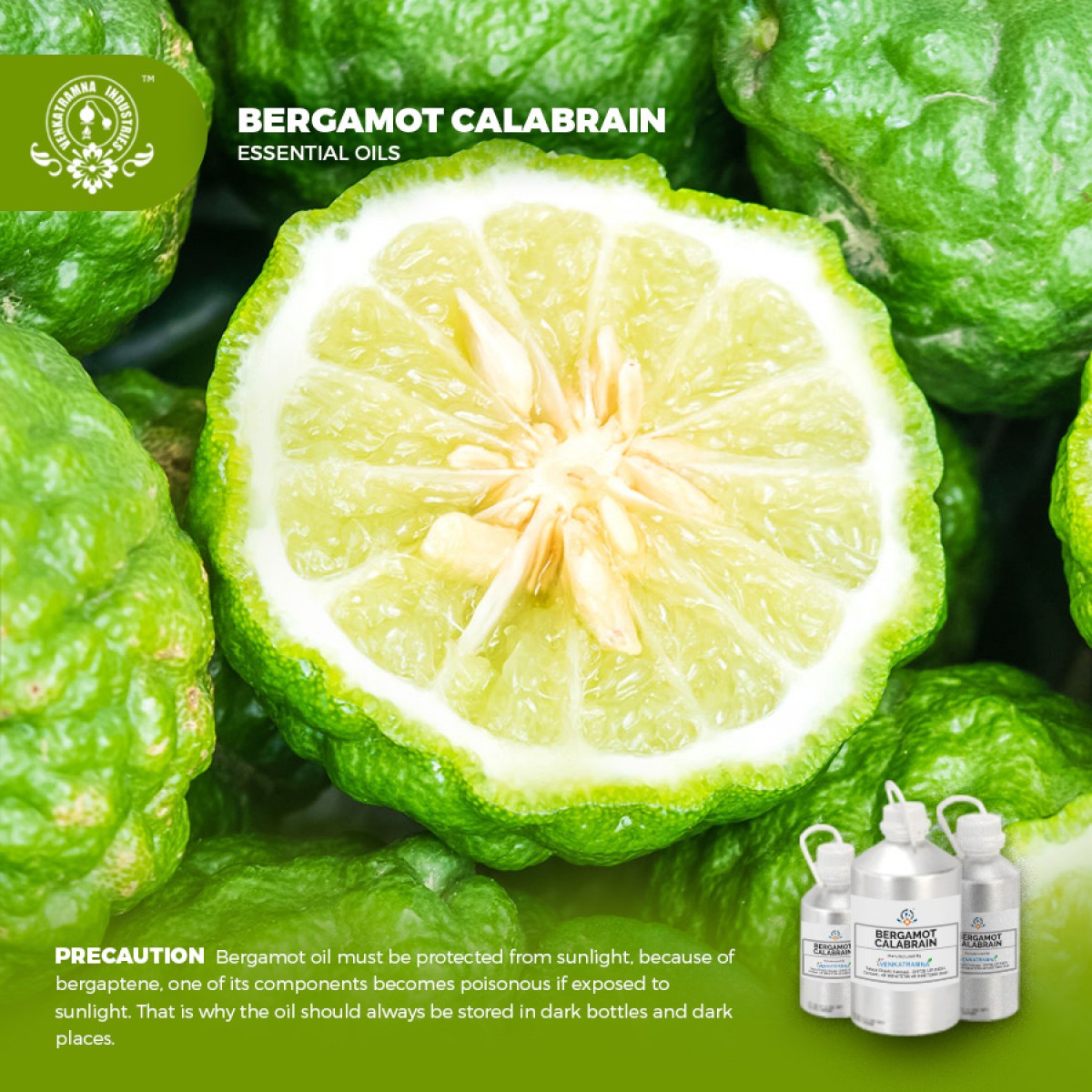Botanical Name: Citrus bergamia Common name: Rectified bergamot, furanocoumarin-free b Read More
Botanical Name: |
Citrus bergamia |
|
Common name: |
Rectified bergamot, furanocoumarin-free bergamot,
citrus aurantium subsp. Bergamia Risso and poit, Bergamot orange. |
|
Plant family: |
Rutaceae |
|
Genus: |
Citrus |
|
Appearance/Color: |
A thin, light yellowish green to
yellowish brown liquid. |
|
Odor: |
The aroma is basically citrus, yet fruity and sweet
with a warm spicy floral quality, and is reminiscent of Neroli, giving a
middle note of medium strength. |
|
Blends With: |
Blends
with Black pepper, clary sage, cypress,
frankincense, Geranium, Jasmine, Mandarin, Nutmeg, orange, Rosemary,
sandalwood, vetiver and Ylang-Ylang. |
|
Origin |
Italy |
Bergamot
scientific name is Citrus bergamia. Bergamot essential oil is light
yellow-green in color. It’s the most delicate of the citrus plants, requiring
special climate and soil in order to thrive.
The
bergamot tree can grow up to four meters high, with star-shaped flowers, and
smooth leaves, bearing citrus fruit resembling but in a pear-shaped. The fruit
ripens from green to yellow. The name bergamot is derived from the city Bergamo
in Lombardy in Lombardy where the oil was first sold.
Citrus bergamot is commercially grown in southern Calabria, southern Italy. It is also grown in southern France and in cote d’lviro for the essential oil and in Antalya in southern Turkey for its marmalade. The fruit is not generally grown for juice consumption. However, in Mauritius where it is grown on small-scale basis, it is largely used for juice consumption by the locals.
The complete range of conditions or methods of use are beyond our control therefore we do not assume any responsibility and expressly disclaim any liability for any use of this product. Information contained herein is believed to be true and accurate however, all statements or suggestions are made without warranty, expressed or implied, regarding accuracy of the information, the hazards connected with the use of the material or the results to be obtained from the use thereof. Compliance with all applicable federal, state, and local laws and local regulations remains the responsibility of the user.
The FDA has not evaluated the statements on this website. No claims are made by Venkatramna Industries as to the medicinal value of any products from vriaroma.com or by us. The information presented here is for educating our customers about the traditional uses of essential oils and is not intended to diagnose, treat, cure, or prevent any disease. You are responsible for understanding the safe application of these products. If you have any questions, please call or email us for further information.
As per NAHA guidelines, New Directions Aromatics (NDA) does not recommend the ingestion of essential oils. It is imperative to consult a medical practitioner before using Essential Oils for therapeutic purposes. Pregnant and nursing women and those taking prescription drugs are especially advised not to use this product without the medical advice of a physician. The oil should always be stored in an area that is inaccessible to children, especially those under the age of 7.
Its
ability to uplift moods or give an energy boost and reliving stress and
antibacterial, analgesic, antiseptic, anti-spasmodic, and Soothing effects.
May
help to ease congestion, coughs and colds, and some infections. Also, can aid digestive system. When diluted
in a carrier oil, it may be beneficial for oily skin and acne prone skin, minor
skin irritations like eczema and psoriasis, cold sores, as well as minor wounds
like cuts, scratches and abrasions.
Refreshing
and uplifting it may assist in relieving depression, nervous tension, stress
and anxiety, and insomnia. Used for concentration, motivation, general
well-being and happiness.
·
Improve
Blood Circulation
·
Prevent
Infections Reduces Pain
·
Reduces
Pain
·
Relaxant
and sedative
·
Aids
in Digestion
·
Skin
Care
·
Eliminates
Bad Odor
·
Reduces
Fever
·
Speeds-up
Wound Healing
·
Relieves
Spasms
Kills
Germs
|
S.No |
Key Constituents |
Strength (%) |
|
1 |
(p)-Limonene |
27.4-52.0% |
|
2 |
Linalyl
acetate |
17.1-40.4% |
|
3 |
Linalool |
1.7-10.6% |
|
4 |
Sabinene |
0.7-12.8% |
|
5 |
g-Terpinene |
5.0-12.4% |
|
6 |
b-Pinene |
5.4-10.0% |
|
7 |
a-Pinene |
0.6-4.2% |
|
8 |
b-Myrcene |
0.5-2.8% |
|
9 |
Neryl
acetate |
0.2-1.1% |
|
10 |
Non-volatile
compounds |
|
|
11 |
Bergamottin
|
0.62-2.65% |
|
12 |
5-Geranyloxy-7-methoxycoumarin |
0.08-0.68% |
|
13 |
Citropten
|
0.02-0.36% |
|
14 |
Bergapten |
0.12-0.23% |
|
15 |
Bergaptol |
0-0.14% |
|
16 |
5-Methoxy-7-geranoxycoumarin
|
0.05-0.16% |
|
17 |
Psoralen |
0-0.0024% |
Safety summary
·
Acute toxicity: Not available.
·
Carcinogenicity: None of the components
of this material are listed as a carcinogen.
·
Chronic toxicity: May cause allergic
reactions on skin.
·
Reproductive toxicity: No adverse effects
on reproduction are known.
·
Inhalation: Inhalation of high
concentrations of vapor may result in irritation of eyes, nose and throat,
headache, nausea, and dizziness.
Skin contact
·
Adverse skin effects: should be prevented
by normal care and personal hygiene.
·
Ingestion: Low order toxicity causing
irritation of the stomach and intestines which results in nausea and vomiting
·
Repeated exposure: Repeated or prolonged
contact may cause redness, irritation and scaling of skin (Dermatitis).
Bergamot oil must
be protected from sunlight, because of bergapten, one of its components become
poisonous if exposed sunlight. That is why the oil should be stored in dark
bottle and dark place. Exposure to sunlight should even be avoided after it is
applied or rubbed into the skin, at least until it gets absorbed into your
skin.
·
Ecotoxicity: very toxic to aquatic environment.
·
Bioaccumulation: No data available
·
Mobility in soil: No data available
·
Persistence and degradability: No data available
·
Biodegradation: No data available
·
PBT and vPvB assessment: No data available





 MSDS-citrus.pdf
MSDS-citrus.pdf





??? ??? - 07 May 2022
Quality and delivery time is good. Will tell after using it.